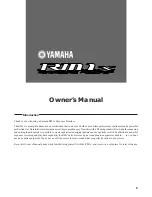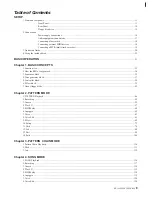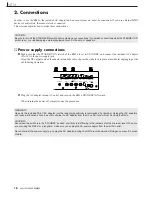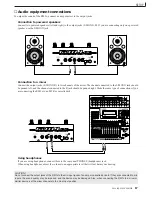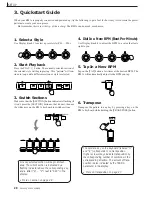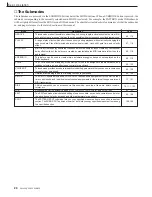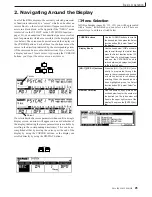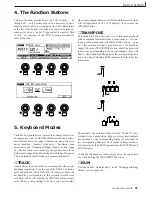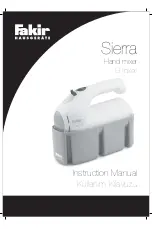
12
RM1x SEQUENCE REMIXER
4. Display Knobs
The four knobs located immediately below the LCD display directly control the corresponding parameters on the display.
For example, in the main PATTERN mode Display Knob 1 can be used to select a style, and Display Knob 4 can be used to
set the BPM. More details are provided in the “Basic Operation” section beginning on page 23.
5. Function Buttons and Indicators
The function buttons - [F1] through [F4] - are similar to the Display Knobs in that they directly control the corresponding
functions on the LCD display, but only when the related indicator is lit. More details are provided in the “Basic Operation”
section beginning on page 23.
6. VOLUME Control
Adjusts the volume of the RM1x audio output via the rear-panel OUTPUT and PHONES jacks.
7. Real Time Controller Knobs & [KNOB] Button
These knobs allow the corresponding parameters to be controlled in real time during pattern or song playback. The param-
eters listed on the panel below the knobs are the default pre-assigned parameters, but other parameters can be assigned as
required via the SETUP submode KNOB ASSIGN function (page 74). The knobs can be switched to control one of two
different parameter groups - “A” and “B” - via the [KNOB] button. The “A” parameter group (the upper default parameters
listed on the panel) are selected when the [KNOB] indicator is lit, and the “B” group (the lower parameters) is selected
when the [KNOB] indicator is out. Different parameters can be assigned to both the “A” and “B” groups via the KNOB
ASSIGN function mentioned above.
8. Cursor Buttons
The cursor buttons move the “cursor” around the LCD display screen, highlighting the various parameters that are available
for editing (the RM1x cursor appears as a dark block with inverse characters).
9. [NO -1] and [YES +1] Buttons
The [NO -1] and [YES +1] buttons are used to edit (change the value of) the parameter at which the cursor is currently
located. The [NO -1] button decrements (decreases stepwise) the value of the selected parameter, while the [YES +1]
button increments (increases stepwise) the parameter. Press either button briefly to decrement or increment the parameter
by one, or hold the button for continuous decrementing of incrementing in the specified direction.
The [NO -1] and [YES +1] button are also used to respond to certain prompts when they appear. Press [YES +1] to go ahead
with the operation, or [NO -1] to cancel.
10. DISPLAY [<-] and [->] Buttons
When the selected mode or submode (page 23) includes more parameters than can fit on the display at one time, arrow
symbols will appear at the left and/or right side of the display to indicate that more parameters are available in the indicated
direction(s). The DISPLAY [<-] and [->] buttons can be used to scroll the display in the corresponding direction when this
occurs.
11. MODE and SUBMODE Buttons
The four MODE buttons select the main RM1x operating modes (PATTERN, PATTERN CHAIN, SONG, and UTILITY),
while the SUBMODE buttons select a range of submodes via which you can access the RM1x's detailed programming
features. Details on mode and submode selection are provided in the “Basic Operation” section beginning on page 23.
SETUP





